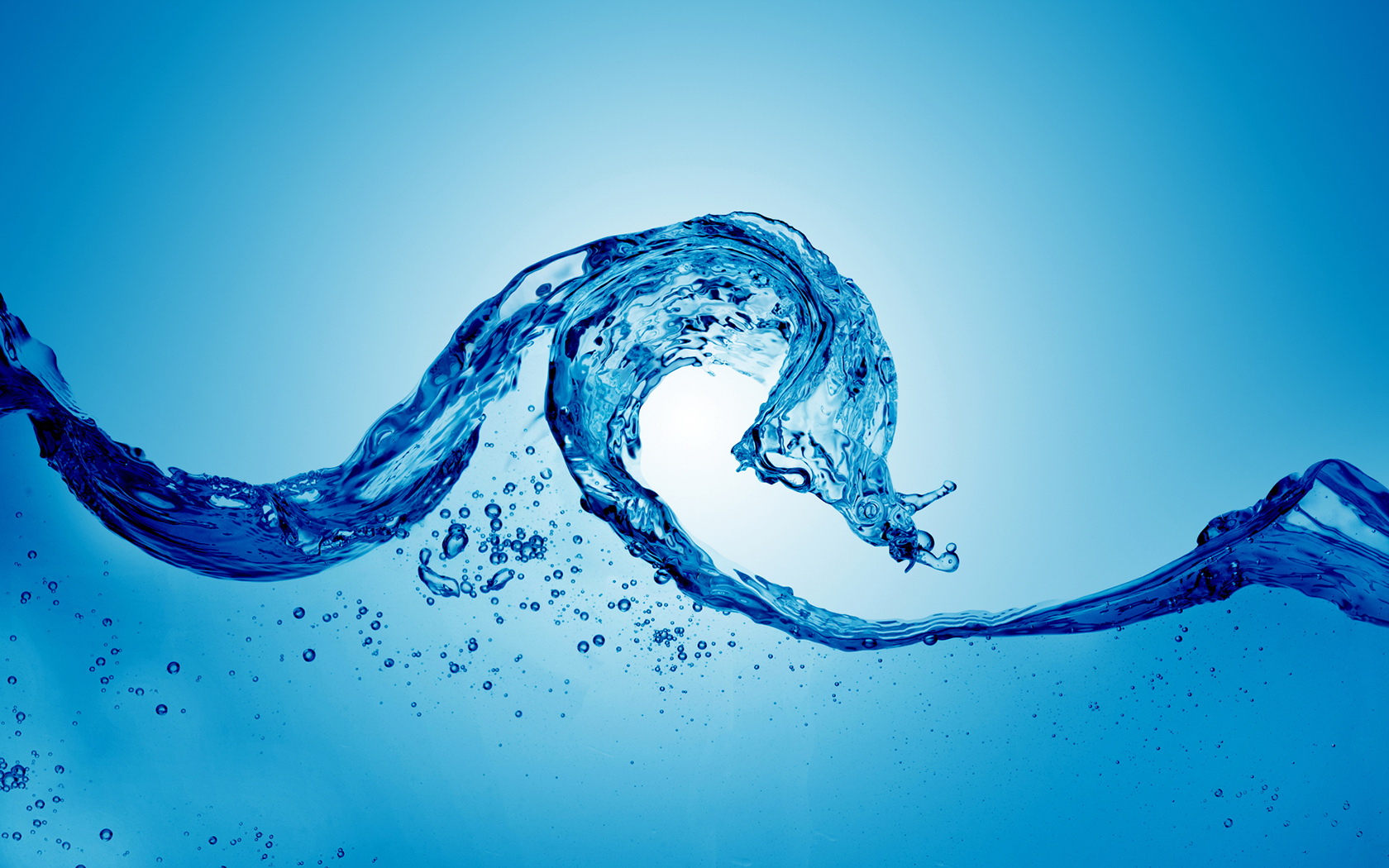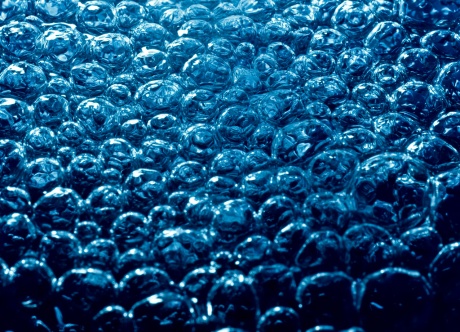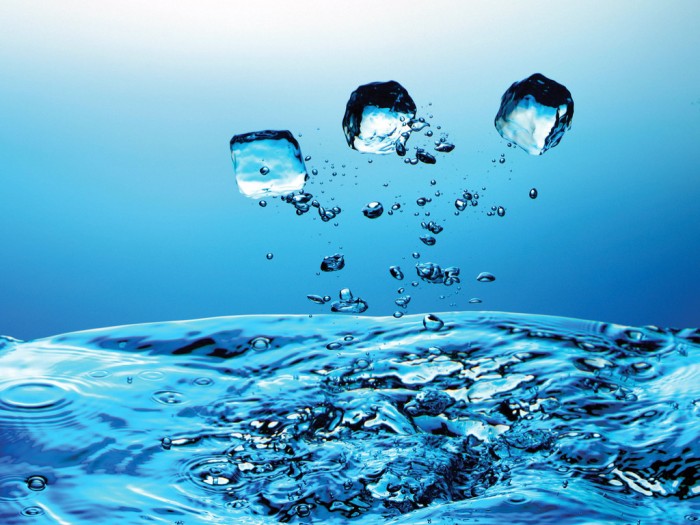|
|
|
| Строка 1: |
Строка 1: |
| | '''The Water Cycle Model''' | | '''The Water Cycle Model''' |
| | | | |
| - | '''Group Size: '''Small Groups<br><br>'''Summary:'''<br>This classroom demonstration will help students understand the water cycle. <br><br><br>'''Materials: '''<br>Teacher:<br>2 Matches<br>1 clear empty 2-liter pop bottle<br>About 80-100 ml (1/2 cup) of warm water<br>Flashlight<br>Measuring cup<br><br>[[Image:water7.jpeg]]<br><br>'''Background For Teachers:'''<br>Water is constantly moving fr om one location to another and changing state. Snow and rain fall to Earth fr om clouds. This is called precipitation. The rain water and melted snow run downhill into rivers and lakes, sometimes crashing over waterfalls. Eventually the water flows into evaporation basins such as the ocean or the Great Salt Lake, where water can return to the atmosphere. <br><br>As water evaporates, it changes from liquid into gas, and moves from oceans, lakes, and rivers into the atmosphere wh ere it forms clouds. Then the cycle begins all over again. (Refer to Instructional Procedures for a discussion on how clouds are formed.)<br><br>'''Intended Learning Outcomes:'''<br>1. Use science process and thinking skills <br>2. Manifest scientific attitudes and interests <br>3. Understand science concepts and principles<br><br>'''Instructional Procedures:'''<br><br>Pre-Assessment/Invitation to Learn<br>Review with the students what is needed for water vapor to condense back to water. (They may bring up a cool mirror, cold pitcher with ice water, cool ground, cold window, etc.)<br>Review with the students why the water vapor condenses on these surfaces. (The warm air has water vapor in it. When it comes in contact with something cool or cold, the water vapor condenses on the cold surface.)<br>Take the students outside on a semi-cloudy day. Discuss with them that clouds are made up of small water droplets that have condensed from water vapor. Relate the following: “We know that warm air with water vapor in it needs to come in contact with something cold to condense into water droplets. What is it that water vapor comes in contact with high in the atmosphere to condense into a cloud?”<br>After a few guesses, teach the students that as water vapor cools in the higher atmosphere, it is attracted to dust particles that are present in the atmosphere. When the cooled water vapor comes in contact with the dust particles, the water vapor will condense into a cloud.<br>The amount of water vapor and dust in the air and wh ere the cold air is in the atmosphere will determine the types of clouds that are formed. | + | '''Group Size: '''Small Groups<br><br>'''Summary:'''<br>This classroom demonstration will help students understand the water cycle. <br><br><br>'''Materials: '''<br>Teacher:<br>2 Matches<br>1 clear empty 2-liter pop bottle<br>About 80-100 ml (1/2 cup) of warm water<br>Flashlight<br>Measuring cup<br><br>[[Image:Water7.jpeg|600px]]<br><br>'''Background For Teachers:'''<br>Water is constantly moving fr om one location to another and changing state. Snow and rain fall to Earth fr om clouds. This is called precipitation. The rain water and melted snow run downhill into rivers and lakes, sometimes crashing over waterfalls. Eventually the water flows into evaporation basins such as the ocean or the Great Salt Lake, where water can return to the atmosphere. <br><br>As water evaporates, it changes from liquid into gas, and moves from oceans, lakes, and rivers into the atmosphere wh ere it forms clouds. Then the cycle begins all over again. (Refer to Instructional Procedures for a discussion on how clouds are formed.)<br><br>'''Intended Learning Outcomes:'''<br>1. Use science process and thinking skills <br>2. Manifest scientific attitudes and interests <br>3. Understand science concepts and principles<br><br>'''Instructional Procedures:'''<br><br>Pre-Assessment/Invitation to Learn<br>Review with the students what is needed for water vapor to condense back to water. (They may bring up a cool mirror, cold pitcher with ice water, cool ground, cold window, etc.)<br>Review with the students why the water vapor condenses on these surfaces. (The warm air has water vapor in it. When it comes in contact with something cool or cold, the water vapor condenses on the cold surface.)<br>Take the students outside on a semi-cloudy day. Discuss with them that clouds are made up of small water droplets that have condensed from water vapor. Relate the following: “We know that warm air with water vapor in it needs to come in contact with something cold to condense into water droplets. What is it that water vapor comes in contact with high in the atmosphere to condense into a cloud?”<br>After a few guesses, teach the students that as water vapor cools in the higher atmosphere, it is attracted to dust particles that are present in the atmosphere. When the cooled water vapor comes in contact with the dust particles, the water vapor will condense into a cloud.<br>The amount of water vapor and dust in the air and wh ere the cold air is in the atmosphere will determine the types of clouds that are formed. |
| | | | |
| - | [[Image:Water-texture-04.jpg]]<br><br>'''Instructional Procedure'''<br>(This is a teacher demonstration for a student inquiry discovery.)<br>Have the students write in their journal.<br>Tell the students that you (the teacher) are going to make a cloud in a bottle. You will also give some explanations while doing the experiment. Have them answer any questions you may ask during the demonstration.<br>Get a two-liter bottle with a lid.<br>Add 1/2 cup of luke-warm water. Ask: “Why is water added to the bottle?” (Water is needed to make clouds.)<br>Light a match and have it burn down the wood a little bit. Blow it out. As soon as it is blown out, quickly place the smoldering match into a bottle to add some smoke to the bottle. (Do this twice.) Ask: “Why is smoke added to the bottle?” (When the water vapor cools it needs dust particles to collect onto to make a cloud.)<br>Seal the bottle with the lid.<br>Shine a flashlight through the bottle and have students record in their journals what they see.<br>Explain to the students that in a minute you are going to squeeze the bottle as hard as you can for 60 to 90 seconds. The pressure in the bottle will cause the temperature to rise in the bottle. Ask: “What is going to happen to some of the water in the bottle as the temperature rises?” (Some of the water will evaporate putting water vapor into the air.)<br>Begin squeezing the bottle. As you are squeezing the bottle explain that after 90 seconds you are going to release your squeeze. Releasing the squeeze is going to cause a pressure change. A rapidly decreasing pressure change in the air always causes a lower temperature. Ask: “What is going to happen to the water vapor in the bottle when the pressure is released?” (The water vapor will cool down and collect onto the dust causing a cloud.<br>Release your squeeze. As the pressure is quickly released, a cloud will momentarily form. Shine the flashlight in the bottle again. Have the students write in their journals what they observed. (A cloud formed.)<br>Let the bottle sit for a couple of minutes. Shine the flashlight in the bottle again. Have the students write what they observed and why they think this happened. (The cloud disappeared because the air became warm and the cloud evaporated into water vapor again.)<br>Discuss the questions you asked during the demonstration.<br>Discuss how this model represents the water cycle.<br><br>[[Image:water10.jpeg]]<br>'''Extensions:'''<br><br>Science.<br>As time permits, investigate the variables. Try the activity again, each time omitting one of the factors (humidity, an air pressure decrease causing a temperature drop, and particles in the air) and see if a cloud still forms. (ILO 1)<br>Have students suggest other forms of dust (i.e., chalk dust). Some students may want you to try the experiment without any dust. (ILO 1)<br><br>'''Homework & Family Connection'''<br>Give each student the assignment to teach his/her family how clouds are formed. He/she should be able to explain with these words:<br>Source of water<br>High Pressure (heat)<br>Evaporation<br>Dust particles in the air<br>Change of air pressure (cooling)<br>Cloud forms (condensation)<br><br>Have the student explain the experiment that was done in class by using a two-liter bottle as a prop only, showing what was done to the bottle to make a cloud. Have him/her report back to class of his/her success. <br><br><br><br>'''Assessment Plan:'''<br>Check for students’ understanding by looking at their journals. See how well hey answered your questions during the demonstration. Listen to their answers th discussion for understanding.<br> | + | [[Image:Water-texture-04.jpg]]<br><br>'''Instructional Procedure'''<br>(This is a teacher demonstration for a student inquiry discovery.)<br>Have the students write in their journal.<br>Tell the students that you (the teacher) are going to make a cloud in a bottle. You will also give some explanations while doing the experiment. Have them answer any questions you may ask during the demonstration.<br>Get a two-liter bottle with a lid.<br>Add 1/2 cup of luke-warm water. Ask: “Why is water added to the bottle?” (Water is needed to make clouds.)<br>Light a match and have it burn down the wood a little bit. Blow it out. As soon as it is blown out, quickly place the smoldering match into a bottle to add some smoke to the bottle. (Do this twice.) Ask: “Why is smoke added to the bottle?” (When the water vapor cools it needs dust particles to collect onto to make a cloud.)<br>Seal the bottle with the lid.<br>Shine a flashlight through the bottle and have students record in their journals what they see.<br>Explain to the students that in a minute you are going to squeeze the bottle as hard as you can for 60 to 90 seconds. The pressure in the bottle will cause the temperature to rise in the bottle. Ask: “What is going to happen to some of the water in the bottle as the temperature rises?” (Some of the water will evaporate putting water vapor into the air.)<br>Begin squeezing the bottle. As you are squeezing the bottle explain that after 90 seconds you are going to release your squeeze. Releasing the squeeze is going to cause a pressure change. A rapidly decreasing pressure change in the air always causes a lower temperature. Ask: “What is going to happen to the water vapor in the bottle when the pressure is released?” (The water vapor will cool down and collect onto the dust causing a cloud.<br>Release your squeeze. As the pressure is quickly released, a cloud will momentarily form. Shine the flashlight in the bottle again. Have the students write in their journals what they observed. (A cloud formed.)<br>Let the bottle sit for a couple of minutes. Shine the flashlight in the bottle again. Have the students write what they observed and why they think this happened. (The cloud disappeared because the air became warm and the cloud evaporated into water vapor again.)<br>Discuss the questions you asked during the demonstration.<br>Discuss how this model represents the water cycle.<br><br>[[Image:Water10.jpeg|600px]]<br>'''Extensions:'''<br><br>Science.<br>As time permits, investigate the variables. Try the activity again, each time omitting one of the factors (humidity, an air pressure decrease causing a temperature drop, and particles in the air) and see if a cloud still forms. (ILO 1)<br>Have students suggest other forms of dust (i.e., chalk dust). Some students may want you to try the experiment without any dust. (ILO 1)<br><br>'''Homework & Family Connection'''<br>Give each student the assignment to teach his/her family how clouds are formed. He/she should be able to explain with these words:<br>Source of water<br>High Pressure (heat)<br>Evaporation<br>Dust particles in the air<br>Change of air pressure (cooling)<br>Cloud forms (condensation)<br><br>Have the student explain the experiment that was done in class by using a two-liter bottle as a prop only, showing what was done to the bottle to make a cloud. Have him/her report back to class of his/her success. <br><br><br>'''Assessment Plan:'''<br>Check for students’ understanding by looking at their journals. See how well hey answered your questions during the demonstration. Listen to their answers th discussion for understanding.<br> |
| | | | |
| | [[Category:Main_river_basins_and_their_characteristics._Аccelerating_methods_and_interactive_technologies]] | | [[Category:Main_river_basins_and_their_characteristics._Аccelerating_methods_and_interactive_technologies]] |
Версия 08:21, 1 июля 2011
The Water Cycle Model
Group Size: Small Groups
Summary:
This classroom demonstration will help students understand the water cycle.
Materials:
Teacher:
2 Matches
1 clear empty 2-liter pop bottle
About 80-100 ml (1/2 cup) of warm water
Flashlight
Measuring cup

Background For Teachers:
Water is constantly moving fr om one location to another and changing state. Snow and rain fall to Earth fr om clouds. This is called precipitation. The rain water and melted snow run downhill into rivers and lakes, sometimes crashing over waterfalls. Eventually the water flows into evaporation basins such as the ocean or the Great Salt Lake, where water can return to the atmosphere.
As water evaporates, it changes from liquid into gas, and moves from oceans, lakes, and rivers into the atmosphere wh ere it forms clouds. Then the cycle begins all over again. (Refer to Instructional Procedures for a discussion on how clouds are formed.)
Intended Learning Outcomes:
1. Use science process and thinking skills
2. Manifest scientific attitudes and interests
3. Understand science concepts and principles
Instructional Procedures:
Pre-Assessment/Invitation to Learn
Review with the students what is needed for water vapor to condense back to water. (They may bring up a cool mirror, cold pitcher with ice water, cool ground, cold window, etc.)
Review with the students why the water vapor condenses on these surfaces. (The warm air has water vapor in it. When it comes in contact with something cool or cold, the water vapor condenses on the cold surface.)
Take the students outside on a semi-cloudy day. Discuss with them that clouds are made up of small water droplets that have condensed from water vapor. Relate the following: “We know that warm air with water vapor in it needs to come in contact with something cold to condense into water droplets. What is it that water vapor comes in contact with high in the atmosphere to condense into a cloud?”
After a few guesses, teach the students that as water vapor cools in the higher atmosphere, it is attracted to dust particles that are present in the atmosphere. When the cooled water vapor comes in contact with the dust particles, the water vapor will condense into a cloud.
The amount of water vapor and dust in the air and wh ere the cold air is in the atmosphere will determine the types of clouds that are formed.

Instructional Procedure
(This is a teacher demonstration for a student inquiry discovery.)
Have the students write in their journal.
Tell the students that you (the teacher) are going to make a cloud in a bottle. You will also give some explanations while doing the experiment. Have them answer any questions you may ask during the demonstration.
Get a two-liter bottle with a lid.
Add 1/2 cup of luke-warm water. Ask: “Why is water added to the bottle?” (Water is needed to make clouds.)
Light a match and have it burn down the wood a little bit. Blow it out. As soon as it is blown out, quickly place the smoldering match into a bottle to add some smoke to the bottle. (Do this twice.) Ask: “Why is smoke added to the bottle?” (When the water vapor cools it needs dust particles to collect onto to make a cloud.)
Seal the bottle with the lid.
Shine a flashlight through the bottle and have students record in their journals what they see.
Explain to the students that in a minute you are going to squeeze the bottle as hard as you can for 60 to 90 seconds. The pressure in the bottle will cause the temperature to rise in the bottle. Ask: “What is going to happen to some of the water in the bottle as the temperature rises?” (Some of the water will evaporate putting water vapor into the air.)
Begin squeezing the bottle. As you are squeezing the bottle explain that after 90 seconds you are going to release your squeeze. Releasing the squeeze is going to cause a pressure change. A rapidly decreasing pressure change in the air always causes a lower temperature. Ask: “What is going to happen to the water vapor in the bottle when the pressure is released?” (The water vapor will cool down and collect onto the dust causing a cloud.
Release your squeeze. As the pressure is quickly released, a cloud will momentarily form. Shine the flashlight in the bottle again. Have the students write in their journals what they observed. (A cloud formed.)
Let the bottle sit for a couple of minutes. Shine the flashlight in the bottle again. Have the students write what they observed and why they think this happened. (The cloud disappeared because the air became warm and the cloud evaporated into water vapor again.)
Discuss the questions you asked during the demonstration.
Discuss how this model represents the water cycle.

Extensions:
Science.
As time permits, investigate the variables. Try the activity again, each time omitting one of the factors (humidity, an air pressure decrease causing a temperature drop, and particles in the air) and see if a cloud still forms. (ILO 1)
Have students suggest other forms of dust (i.e., chalk dust). Some students may want you to try the experiment without any dust. (ILO 1)
Homework & Family Connection
Give each student the assignment to teach his/her family how clouds are formed. He/she should be able to explain with these words:
Source of water
High Pressure (heat)
Evaporation
Dust particles in the air
Change of air pressure (cooling)
Cloud forms (condensation)
Have the student explain the experiment that was done in class by using a two-liter bottle as a prop only, showing what was done to the bottle to make a cloud. Have him/her report back to class of his/her success.
Assessment Plan:
Check for students’ understanding by looking at their journals. See how well hey answered your questions during the demonstration. Listen to their answers th discussion for understanding.
Subjects > Geography > Geography 8th grade > Main river basins and their characteristics > Main river basins and their characteristics. Аccelerating methods and interactive technologies
|













